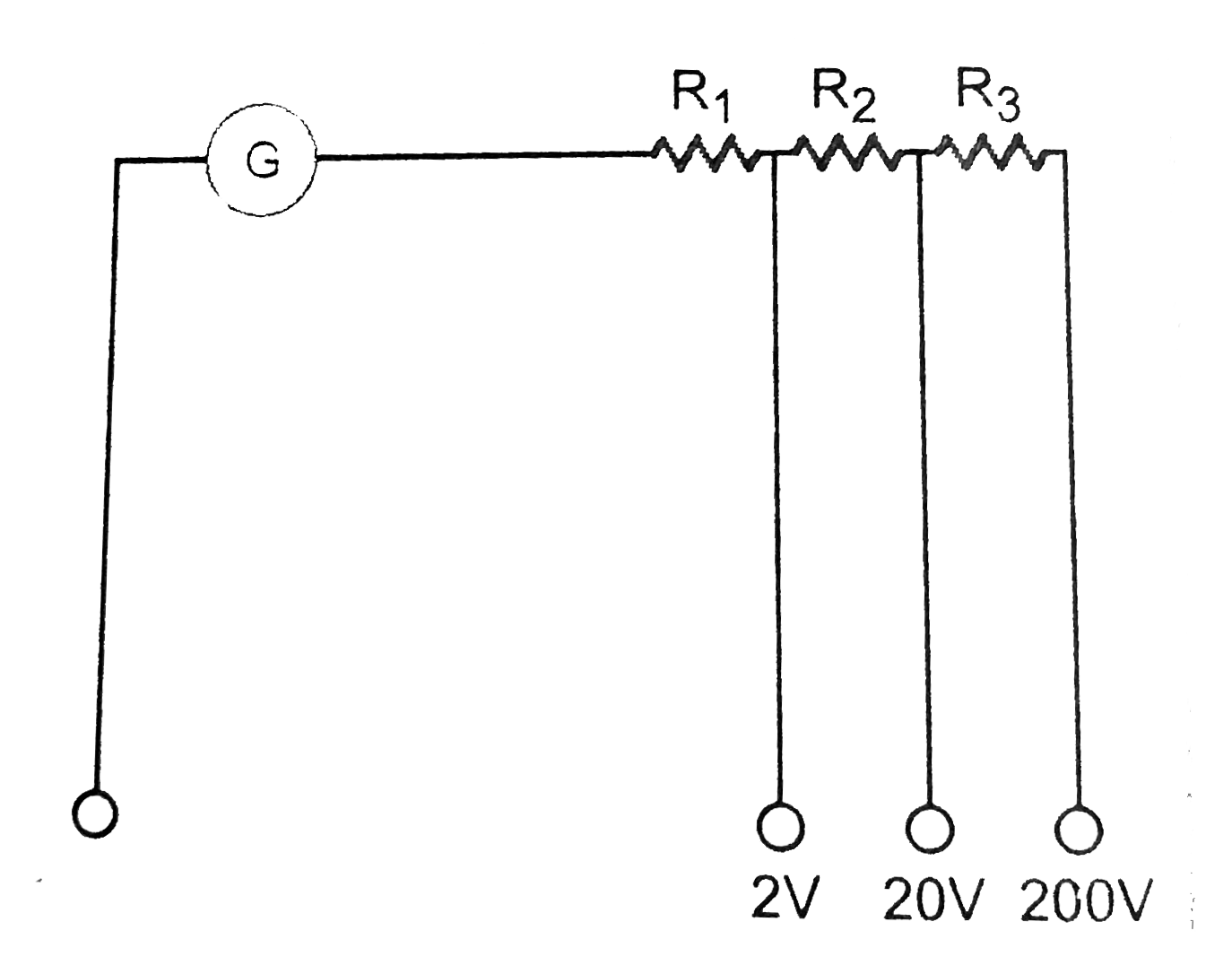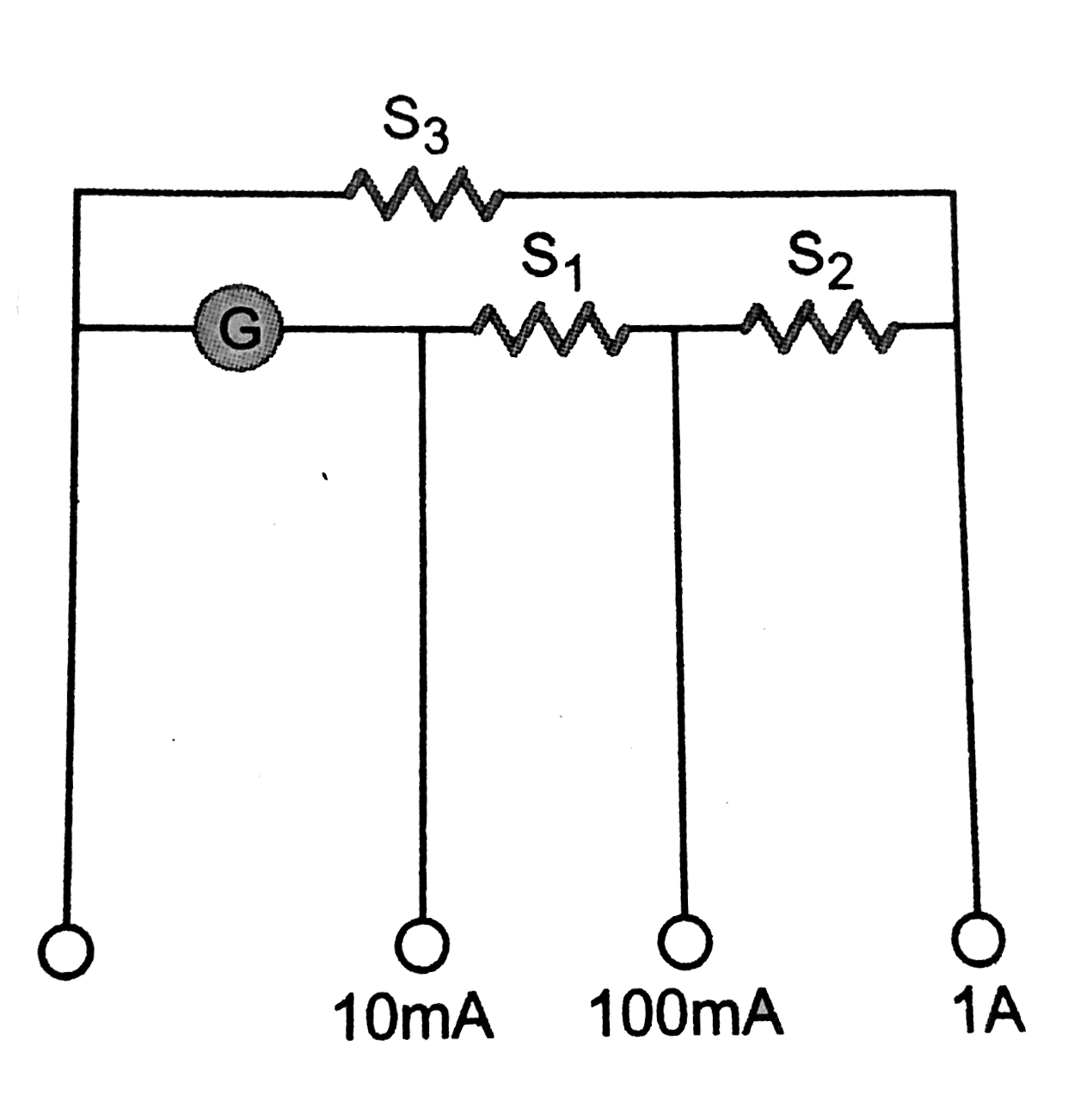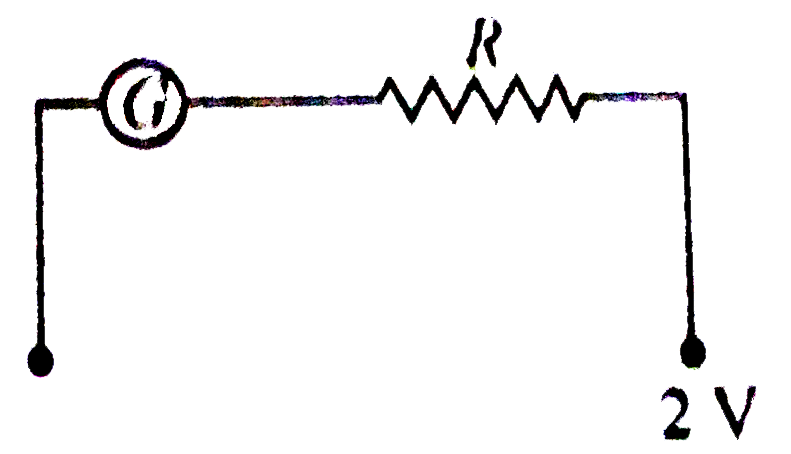A multirange voltmeter can be constructed by using a galvanometer circuit as shown in figure. We want to construct a voltmeter that can measure 2V, 20V and 200V using a galvanometer of resistance 10Ω and that produces maximum deflection for current of 1mA. Find R1, R2 and R3 that have to be used. 
18kΩ
180kΩ
1.8kΩ
1800kΩ
The correct Answer is:1
Here, Ig=1mA=1×10−3A,G=10Ω
R1=?,R2=?,R3=?
Using R+G=VIg

At point P,R1+10=210−32000Ω
R1=2000−10=1990Ω=1.9kΩ
At point Q,R1+R2+10=2010−3=20000Ω
R2+2000=20000
∴R2=18000Ω=18kΩ
At point R,
R1+R2+R3+10=20010−3=200000Ω
∴R3=200000−1990−18000−10
Topper's Solved these Questions
- MOVING CHARGES AND MAGNETISMBOOK - NARAYNACHAPTER - MOVING CHARGES AND MAGNETISMEXERCISE - LEVEL-V (SINGLE ANSWER QUESTION)
85 Videos
- MOVING CHARGES AND MAGNETISMBOOK - NARAYNACHAPTER - MOVING CHARGES AND MAGNETISMEXERCISE - LEVEL-VI (SINGLE ANSWER QUESTION)
81 Videos
- MOVING CHARGES AND MAGNETISMBOOK - NARAYNACHAPTER - MOVING CHARGES AND MAGNETISMEXERCISE - LEVEL-III
45 Videos
- MAGNETISM AND MATTERBOOK - NARAYNACHAPTER - MAGNETISM AND MATTEREXERCISE - EXERCISE - 4 (SINGLE ANSWER TYPE QUESTION)
17 Videos
- NUCLEAR PHYSICSBOOK - NARAYNACHAPTER - NUCLEAR PHYSICSEXERCISE - LEVEL-II-(H.W)
9 Videos
Similar Questions
A multirange current meter can be constructed by using a galvanometer circuit as shown in figure. We want a current meter that can measure 10mA, 100mA and 1A using a galvanometer of resistance 10Ω and that produces maximum deflection for current of 1mA. Find S1,S2 and S3 that have to be used.

View SolutionA voltmeter which can measure 2 V isconstructed by using a galvanometer of resistance 12Ω and that produces maximum deflection for the current of 2mA. Then the resistance R is

View Solution
Knowledge Check
A galvanometer has resistance of 7Ω and given a full scale deflection for a current of 1.0A. How will you convert it into a voltmeter of range 10V
A3Ω in seriesB3Ω in aprallelC17Ω in seriesD30Ω in seriesA galvanometer of internal resistance 100Ω has a full scale deflection current of 1mA. To convert it into a voltmeter of range 0−10V, the resistance to be connected is
A9000 Ω in SeriesB10,000 Ω in SeriesC9,900 Ω in SeriesD9,800 Ω in Series
Hwo can a voltmeter of resistance 200 ohm and measuring 10 V be used tomeasure a current of 5A ?
View Solution" A galvanometer of resistance "20" ohm suffers full scale deflection for a current "20mA" .It can be converted a Voltmeter of range "200V" by "
View SolutionA galvanometer has coil resistance 30Ω and full deflection current of 2mA. What resistance is needed to convert it into a voltmeter of 0.2V range.
View SolutionCalculate the value of resistance needed to convert a galvanometer of resistance 200Ω, which gives a full scale deflection for a current of 5 mA, into a voltmeter of 0-10V range.
View SolutionHow can we make a galvanometer with G=20Ω and ig=1.0mA into a voltmeter with a maximum range of 10V?
View SolutionA galvanometer of resistance 20 ohm suffers full scale deflection for a current 20mA .It can be converted a Voltmeter of range 200V by
View Solution
